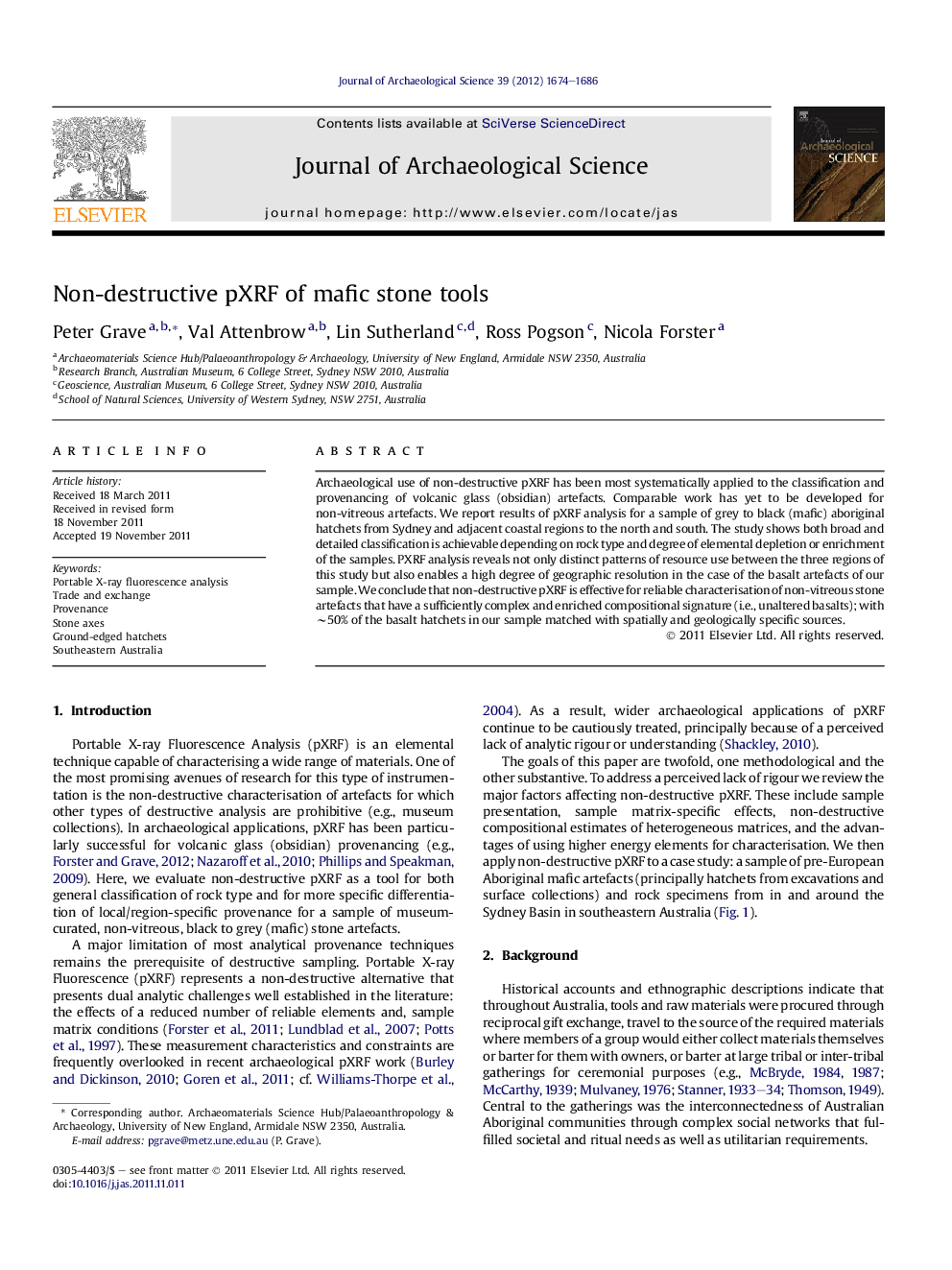| Article ID | Journal | Published Year | Pages | File Type |
|---|---|---|---|---|
| 1035673 | Journal of Archaeological Science | 2012 | 13 Pages |
Archaeological use of non-destructive pXRF has been most systematically applied to the classification and provenancing of volcanic glass (obsidian) artefacts. Comparable work has yet to be developed for non-vitreous artefacts. We report results of pXRF analysis for a sample of grey to black (mafic) aboriginal hatchets from Sydney and adjacent coastal regions to the north and south. The study shows both broad and detailed classification is achievable depending on rock type and degree of elemental depletion or enrichment of the samples. PXRF analysis reveals not only distinct patterns of resource use between the three regions of this study but also enables a high degree of geographic resolution in the case of the basalt artefacts of our sample. We conclude that non-destructive pXRF is effective for reliable characterisation of non-vitreous stone artefacts that have a sufficiently complex and enriched compositional signature (i.e., unaltered basalts); with ∼50% of the basalt hatchets in our sample matched with spatially and geologically specific sources.
► We report results from pXRF analysis of mafic Aboriginal hatchets from Sydney region. ► Classification dependant on degree of elemental depletion or enrichment of rock type. ► Non-destructive pXRF effective for provenancing primary basalts.
